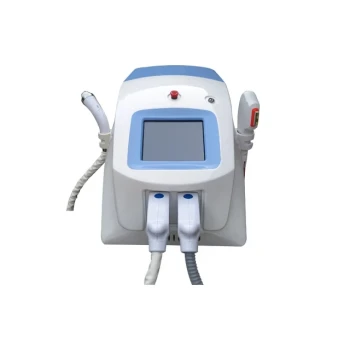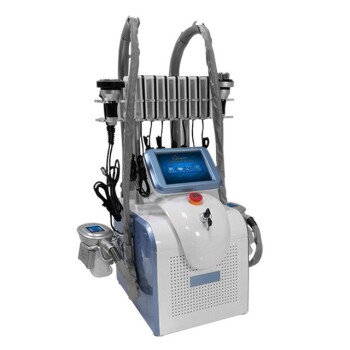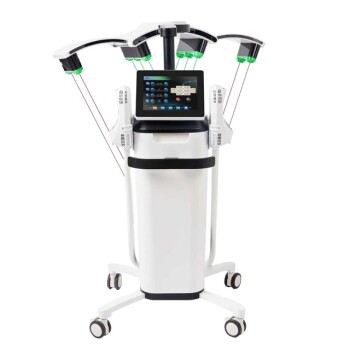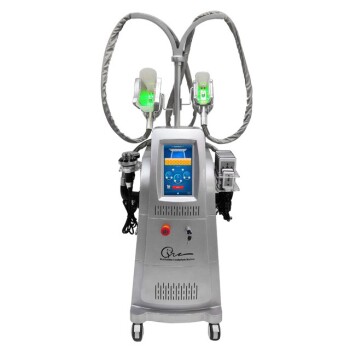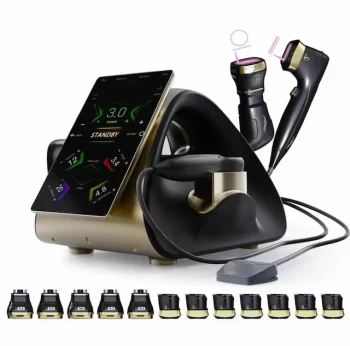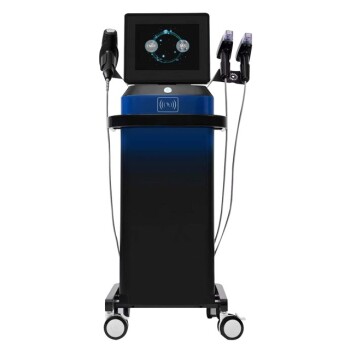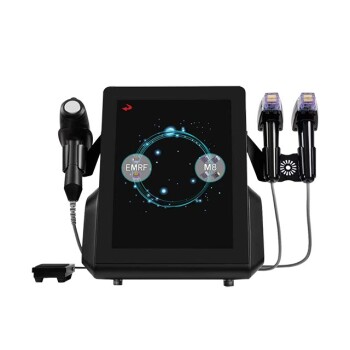Yes, but their effectiveness is not guaranteed. Both radiofrequency (RF) and ultrasonic cavitation are scientifically-backed technologies that can deliver significant results for skin tightening and localized fat reduction. However, their success is entirely dependent on two critical factors: the quality of the device and the skill of the person operating it.
The question is not whether RF and cavitation can work—the underlying science is sound. The real question is whether the specific treatment you receive will be delivered with the power, depth, and expertise required to produce a meaningful biological response.

How These Technologies Fundamentally Work
To understand if a treatment will be effective, you must first understand its mechanism. RF and cavitation work on entirely different principles to achieve distinct goals.
Radiofrequency (RF): The Skin Tightening Engine
Radiofrequency therapy works by generating controlled heat in the deep layers of your skin, specifically the dermis.
This thermal energy causes two things to happen. First, it causes the existing collagen fibers to contract, creating an immediate, albeit minor, tightening effect.
More importantly, this controlled heating creates a "thermal injury" that stimulates the body's natural healing response. This process prompts fibroblasts—the cells responsible for creating connective tissue—to produce new collagen and elastin over the following weeks and months. This new collagen is what leads to firmer, smoother, and more youthful-looking skin.
Ultrasonic Cavitation: The Fat Cell Disruptor
Ultrasonic cavitation is not a skin tightening technology; it is a body contouring tool designed to reduce localized fat deposits.
It uses low-frequency ultrasound waves to create microscopic bubbles within the interstitial fluid surrounding your fat cells.
These bubbles rapidly expand and collapse—a process called cavitation. The implosion creates a powerful pressure wave that is strong enough to rupture the membrane of nearby adipocytes (fat cells) without harming surrounding tissue like skin and nerves. The fatty contents are then released and processed by the body's lymphatic and metabolic systems.
The Decisive Factor: Why Not All Treatments Are Equal
Many people report poor results because the market is saturated with low-power devices and undertrained providers. The principles from the reference—"deep-acting" and "high-power"—are the key differentiators.
The Problem with Weak, Superficial Machines
For RF to work, the dermis must be heated to a therapeutic temperature, typically between 40-44°C (104-111°F). Low-power machines simply cannot generate and sustain this temperature at the required depth.
The result is a treatment that feels warm but does nothing to stimulate new collagen. It is functionally useless for long-term skin tightening.
Similarly, for cavitation to be effective, the ultrasound waves must have sufficient power to create the pressure shockwave needed to break down fat cells. Weak devices create insufficient pressure, leaving the fat cells intact.
The Operator's Skill is Non-Negotiable
A powerful machine in the wrong hands is ineffective and potentially dangerous. A skilled therapist understands anatomy and knows precisely how to adjust the device's settings for different body areas, fat densities, and skin types.
They ensure the target tissue reaches the therapeutic temperature in an RF session or that the cavitation energy is properly focused on the subcutaneous fat layer. Without this expertise, even the best equipment will fail to deliver results.
Understanding the Trade-offs and Limitations
These technologies are powerful tools, but they are not magic wands. Setting realistic expectations is crucial for a successful outcome.
This Is Not a Weight-Loss Solution
Cavitation and RF are body contouring procedures. They are designed to target stubborn, localized pockets of fat (like on the abdomen, thighs, or flanks) and address skin laxity. They are not effective for significant, overall weight loss.
Results Are Neither Instant Nor Permanent
While you might notice some immediate tightening from RF, the true results appear over 2-6 months as new collagen is formed. Cavitation results also require a course of multiple treatments.
Furthermore, the results are only as permanent as your lifestyle. Cavitation destroys fat cells, but your remaining fat cells can still expand if you are in a caloric surplus.
A Healthy Lifestyle is a Prerequisite
For cavitation to be effective, your lymphatic system must be able to clear the released fat. Proper hydration, a healthy diet, and light exercise are essential to support this process and see results. Without this support, the released fat can simply be re-deposited elsewhere.
How to Ensure You Get Real Results
Your success depends on choosing the right provider and the right technology for your specific aesthetic goal.
- If your primary focus is skin laxity or cellulite: Prioritize a provider using a high-power, medical-grade RF device and ask to see before-and-after photos of their work on similar cases.
- If your primary focus is reducing small, stubborn fat pockets: Seek out a clinic specializing in high-power ultrasonic cavitation and confirm they have a clear protocol for post-treatment support, including lymphatic drainage.
- If you are seeking general weight loss: These technologies are not the correct tool; focus first on diet and exercise as your primary strategy for a healthier body composition.
By vetting your provider and understanding the technology, you transform a speculative purchase into a targeted and effective investment in your goals.
Summary Table:
| Technology | Primary Function | How It Works | Key Requirement |
|---|---|---|---|
| Radiofrequency (RF) | Skin Tightening | Heats dermis to stimulate new collagen production | High-power device & skilled operator |
| Ultrasonic Cavitation | Fat Reduction | Uses ultrasound to rupture fat cell membranes | Sufficient power & proper technique |
Ready to achieve real, professional results with RF and cavitation?
BELIS specializes in medical-grade aesthetic equipment that delivers the power and precision needed for effective treatments. Our professional RF and cavitation machines are trusted by medical aesthetics clinics and premium beauty salons worldwide.
Contact our experts today to learn how our technology can help your practice deliver superior outcomes to your clients.
Visual Guide
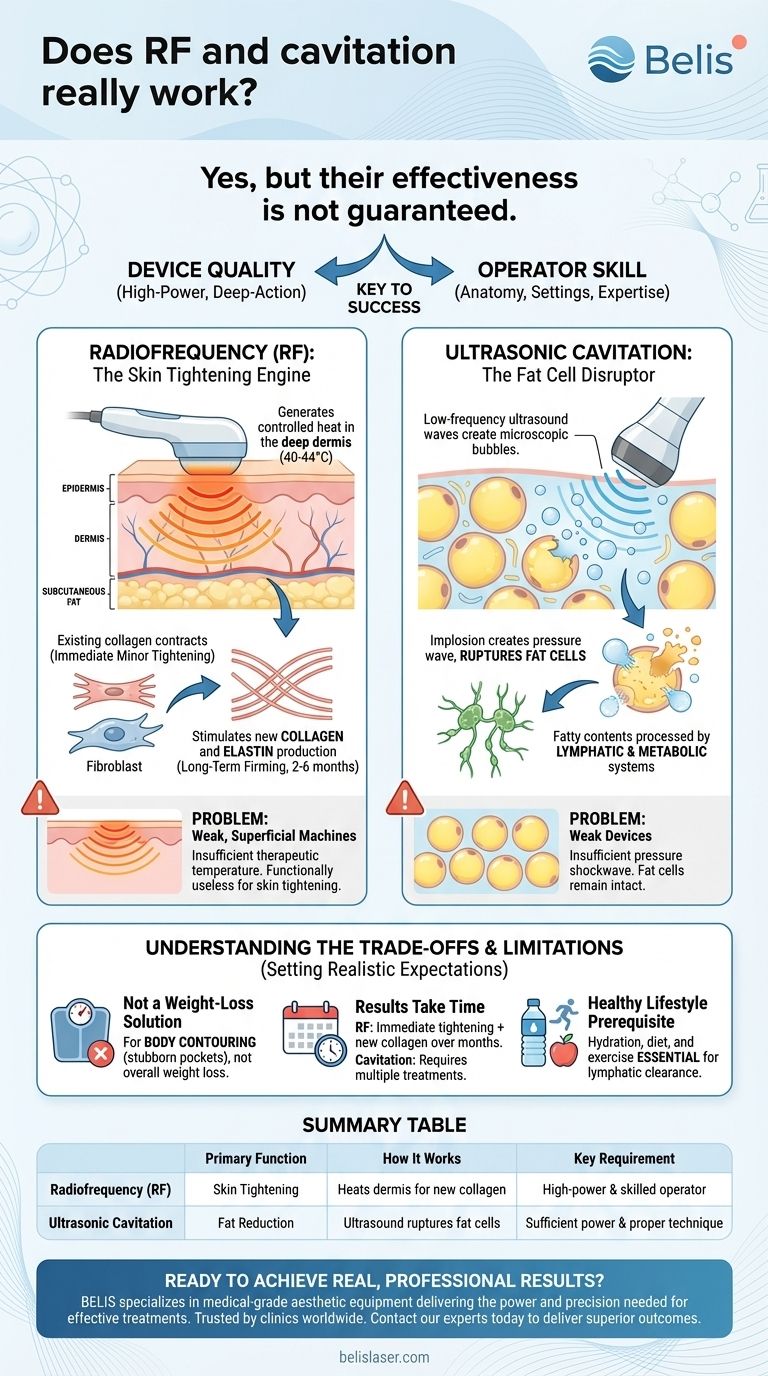
Related Products
- Cryolipolysis Fat Freezing Machine and Ultrasonic Cavitation Device
- Cryolipolysis Fat Freezing Machine Ultrasonic Cavitation Fat Reducing Device
- IPL SHR+Radio frecuency machine
- Cryolipolysis Cavitation Machine Fat Cavitation Machine
- 12D HIFU Machine Device for Facial HIFU Treatment
People Also Ask
- Does cavitation get rid of belly fat? Yes, Here's How It Works for Body Sculpting
- Can you freeze your own fat at home? Avoid Frostbite and Permanent Skin Damage
- How does fat leave the body after fat freezing? The Science of Permanent Fat Cell Removal
- How much weight can you lose with fat freezing? The Truth About Body Contouring vs. Weight Loss
- Does cavitation destroy fat cells permanently? Yes, for targeted, stubborn fat reduction.


